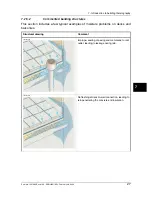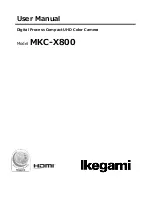
7.2.8
Insulation deficiencies
7.2.8.1
General information
Insulation deficiencies do not necessarily lead to air infiltration. If fiberglass insulation
batts are improperly installed air pockets will form in the building structure. Since
these air pockets have a different thermal conductivity than areas where the insulation
batts are properly installed, the air pockets can be detected during a building ther-
mography inspection.
As a rule of thumb, areas with insulation deficiencies typically have higher temperatures
than where there is only an air infiltration.
When carrying out building thermography inspections aimed at detecting insulation
deficiencies, be aware of the following parts in a building structure, which may look
like insulation deficiencies on the infrared image:
■
Wooden joists, studs, rafter, beams
■
Steel girders and steel beams
■
Water piping inside walls, ceilings, floors
■
Electrical installations inside walls, ceilings, floors—such as trunking, piping etc.
■
Concrete columns inside timber framed walls
■
Ventilation ducts & air ducts
7.2.8.2
Commented building structures
This section includes a few typical examples of details of building structures with in-
sulation deficiencies:
Comment
Structural drawing
Insulation deficiencies (and air infiltration) due to
improper installation of insulation batts around an
electrical mains supply.
This kind of insulation deficiency will show up as
dark areas on an infrared image.
10553203;a2
7
Publ. No. 1557882 Rev. a156 – ENGLISH (EN) – February 28, 2006
35
7 – Introduction to building thermography
Summary of Contents for ThermaCAM B2
Page 2: ......
Page 4: ......
Page 6: ......
Page 7: ...ThermaCAM B2 User s manual Publ No 1557882 Rev a156 ENGLISH EN February 28 2006...
Page 191: ......
















































